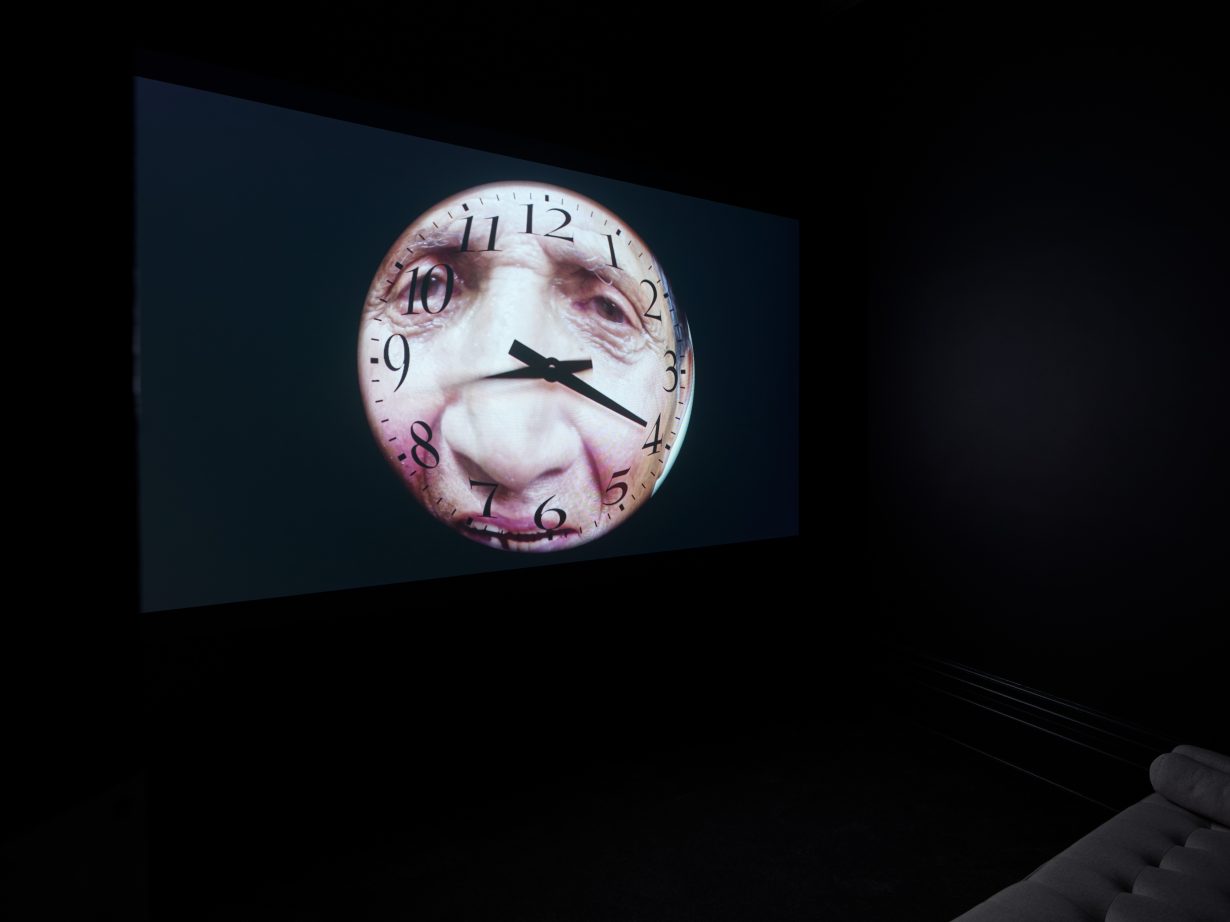In the shade of the sun at The Mosaic Rooms, London contemplates ‘the relationship of politics and aesthetics’ in Palestine
The introductory didactics of The Mosaic Rooms’ latest exhibition promise a selection of new commissions that will allow visitors to contemplate ‘the relationship of politics and aesthetics’ in Palestine. However, presenting the works of only three artists (Makimakkuk, who was commissioned for a soundwork, was denied a UK visa and thus unable to stage her onetime performance) and not a lot of context, the viewer hoping to learn more comes away with very little.
For her two-‘chapter’ video installation, The melancholy of this useless afternoon (all works 2023), Dina Mimi offers a poetic metaphor for Palestinian life under the occupation. Chapter I is a single-channel, 11-minute video featuring moving images of staged birdsong competitions, interrupted by abstract, lunar-crater-esque imagery. Songs, which the exhibition text informs us are revolutionary ballads from Oman, Yemen and Palestine, play over these clips. Directly opposite is chapter II, another single-channel video that makes a metaphoric gesture towards Palestinian liberation by showing arable landscapes and men unwrapping fabric from their calves or cutting open a juice carton to reveal and release trapped birds (it’s not clear how or why they are confined in these ways in the first place).

Mona Benyamin’s single-channel video Tomorrow Again offers a fascinating demonstration of the mutability of truth and sensationalism through the artist’s staging of fictional news broadcasts and reactions based on real events in Palestine. At one point, the screen splits as two bystanders are set side by side and offer contradictory accounts of the events unfolding behind them: “I saw nothing,” says one in Arabic (subtitled English), just as the other says, “I saw everything”; in another clip, four ‘experts’ begin to wail and physically fight one another while in the newsroom. Benyamin’s work, in its agonising displays of the emotion typically unseen in real news broadcasts, agitates the stoic authority of such outlets.
Revolution is a forest that the colonist can’t burn is a multimedia installation by Xaytun Ennasr. Central to the installation is a group of small, living fig and olive trees arranged on the floor in the middle of the room atop a long piece of blue fabric. Along one wall are two blue flags stitched with glittering gold words that read, in English and Arabic respectively, ‘FROM THE RIVER TO THE SEA’, while on another are 12 drawings of large twisting trees set against blue skies and dappled stars with titles such as Love is an eternal spring from which we all drink or Revolution is a tree under which the whole village gathers and declares love. Lastly an iPad sits atop a table, linked to a large monitor; visitors are invited to engage with a specially designed ‘videogame’ in which they continuously swirl their fingers on the screen to facilitate the ‘growth’ of trees but which visually transpires as the multiplication and swelling of digitally predrawn bark and leaf patterns over a flattened orange-and-blue landscape.
As one is left to circle one’s finger round and round the iPad, feelings of ambivalence for this artwork and the exhibition as a whole creep in. While Mimi’s and Benyamin’s videoworks are compelling in their respective poeticism and interrogation, Ennasr’s seem oversimplified by comparison. In general, the exhibition does very little to form tethers between the works it has commissioned, or draw new connections to the realities of Palestinian aesthetics and politics. This is mostly due to the fact that In the shade of the sun relies heavily on visitors arriving forearmed with knowledge of the place and the resulting inferences. To those unequipped, what is left unhelpfully unsaid leaves visitors to wonder about missed significance. They leave none the wiser.
In the shade of the sun at The Mosaic Rooms, London, through 14 January
